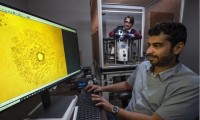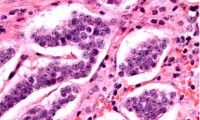-
Novel Immunoassays Enable Early Diagnosis of Antiphospholipid Syndrome
- Source: drugdu
- 93
- February 24, 2024
-
Ultra-Sensitive Blood Test Reflects Brain Damage and Predicts Functional Outcomes after Ischemic Stroke
- Source: drugdu
- 166
- February 23, 2024
-
Gold-Enhanced Nanopore Sensors Detect Ovarian Cancer Biomarkers in Urine Samples
- Source: drugdu
- 208
- February 23, 2024
-
Pain-Free, Low-Cost, Sensitive, Radiation-Free Device Detects Breast Cancer in Urine
- Source: drugdu
- 145
- February 22, 2024
-
Hengrui Medical made a new breakthrough in the field of medical nuclide preparation and successfully prepared 64Cu in batch.
- Source: drugdu
- 136
- February 22, 2024
-
Accurate Blood Test for Detecting Malignant Brain Tumors Could Help Patients Avoid Risky Surgery
- Source: drugdu
- 160
- February 21, 2024
-
New Protein Biomarker to Help Develop Blood-Based Tests for Aggressive Neuroendocrine Carcinomas
- Source: drugdu
- 116
- February 19, 2024
-
Study Advances Blood Tests for Psychiatric and Neurological Disorders
- Source: drugdu
- 140
- February 19, 2024
-
Study suggests heart stress test could transform patient diagnosis
- Source: drugdu
- 108
- February 17, 2024
-
【EXPERT Q&A】When exporting Class I medical devices, should they be declared for non-medical or medical use?
- Source: drugdu
- 158
- February 15, 2024
your submission has already been received.
OK
Subscribe
Please enter a valid Email address!
Submit
The most relevant industry news & insight will be sent to you every two weeks.













